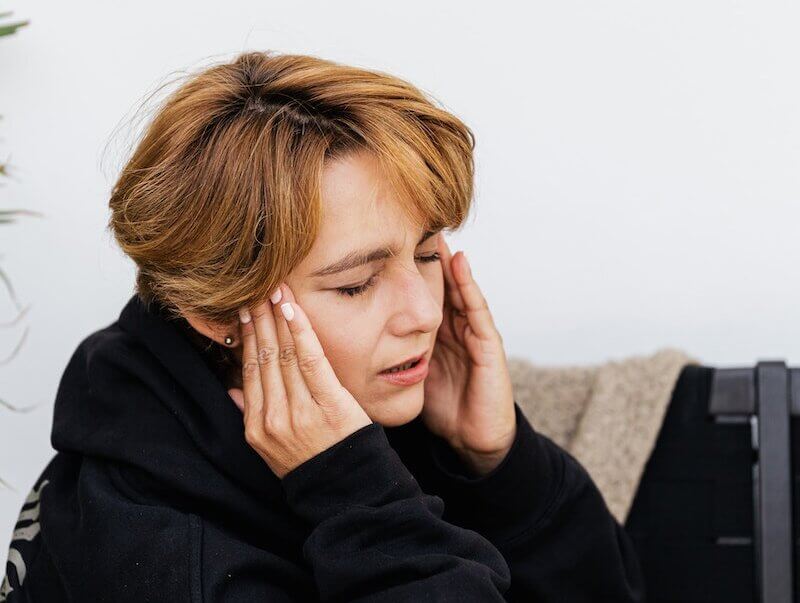AARHUS, Denmark — Individuals who suffer from migraines are more likely to experience a stroke before reaching the age of 60, new research reveals. Additionally, women who experience these debilitating headaches may also face a slightly higher risk of a heart attack.
Researchers in Denmark discovered that both women and men who endure migraines possess an increased risk of having an ischemic stroke, where a blood clot blocks a blood vessel in the brain. However, the risk of heart attack and hemorrhagic stroke — where an artery in the brain bursts — appears to be unique to women.
The study’s leader, Dr. Cecilia Hvitfeldt Fuglsang of Aarhus University, explains that prior studies have hinted at the increased risk of ischemic stroke predominantly affecting young women, yet it remained unclear whether women with migraines also bear a higher risk of heart attack and hemorrhagic stroke compared to men. This query was the primary focus of the new research.
Dr. Fuglsang’s team conducted a comprehensive nationwide study of Danish medical records spanning from 1996 to 2018, for individuals between 18 and 60 years-old. They identified men and women with migraines based on their prescription drug records. The team then compared their risk of heart attack and both types of strokes before the age of 60 with the corresponding risks faced by people from the general population who did not suffer from migraines.
Scroll down to see which drugs may help relieve migraines

Contradicting previous findings, their analysis revealed that both genders with migraines had a similarly increased risk of ischemic stroke. However, the study showed that women with migraines might also have a slightly elevated risk of heart attack and hemorrhagic stroke, compared to men suffering from migraines and the general population.
Published in PLoS Medicine, the study results suggest that women are more adversely affected by migraines, a condition which predominantly affects females to begin with. The researchers note that since they used prescription drug records to identify patients with migraines, they might have overlooked those who don’t seek treatment for these debilitating headaches. This oversight could result in underestimating the role of migraines in these health complications.
The researchers emphasize the importance of identifying individuals at increased risk to enable the application of targeted preventative therapies.
“Migraine was associated with a similarly increased risk of ischemic stroke among young men and women. However, migraine may be associated with an increased risk of myocardial infarction and hemorrhagic stroke only among women,” Hvitfeldt Fuglsang says in a media release.
What medications help alleviate migraines?
The treatment of migraines typically involves both preventative and symptomatic (acute) strategies:
Acute treatments are taken when a migraine attack begins to alleviate symptoms and stop the attack’s progression. These include:
- Pain relievers: Over-the-counter medications like ibuprofen, aspirin, or acetaminophen can sometimes help with less severe migraines.
- Triptans: These are prescription medications such as sumatriptan and rizatriptan that are effective for moderate to severe migraines. They work by promoting constriction of blood vessels and blocking pain pathways in the brain.
- Ergotamines: These are less commonly used but can be effective for migraines that last longer than 48 hours, according to the Mayo Clinic.
- Anti-nausea drugs: Since migraines are often accompanied by nausea, these medications can help manage these symptoms.
- Opioid medications: These are typically reserved for those who cannot take other migraine medications due to allergies or side-effects. Given the risk of dependency, they are not the first choice for treatment.
Preventative treatments are medications or lifestyle changes that are aimed at reducing the frequency and severity of migraines. These include:
- Daily medications: Certain antidepressants, blood pressure-lowering medications, and anti-seizure drugs can help prevent migraines.
- Botox injections: For chronic migraines, Botox injections every 12 weeks can help reduce the frequency of headaches.
- Lifestyle modifications: Regular exercise, adequate sleep, stress management, staying hydrated, and avoiding known migraine triggers can help reduce the frequency and severity of migraines.
- Calcitonin gene-related peptide (CGRP) inhibitors: These are a newer class of preventive drugs. They work by blocking the effects of CGRP, a molecule that’s elevated in the blood during a migraine.
South West News Service writer Stephen Beech contributed to this report.

